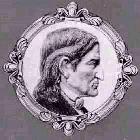

|
Oberweissbach ChurchThe founder of the Kindergarten, Friedrich Wilhelm August Froebel, son of Pastor Johann Jacob Froebel, was baptized in our church. |
Gallery shop
|
Our church is the largest village church of Thuringia and is called the Cathedral of Southern Thuringia.The tradition of our church is as old as the village itself. The names of the pastors have been recorded since 1471 and the church had existed long before that. The oldest church books were destroyed during the Thirty Years War (1618-1648). During that war almost the entire village and church were burnt down. However, in that same year the reconstruction of the church was begun. It was located behind the old parsonage, which is today the Froebel Museum. The old church tower from that former church can still be admired today on the roof of the community center in the neighboring village of Lichtenhain. Soon the church became too small and was in danger of collapsing. A new and bigger church was planned. On April 28, 1767 Pastor Treuner laid the foundation stone, but crop failures, famines and pestilence interrupted the construction for the next few years. In the year 1776, under the leadership of Pastor Johann Jacob Froebel, the construction resumed. In the summer of 1779 the bells from the old belfry in the graveyard were installed in the church’s. After 12 and a half years, the imposing house of God was finally completed, but not without high debts for the parish. The new structure was consecrated on October 24, 1779. Oberweißbach used to be the center of the herbal remedies industry, which were all locally produced in cottage industries and sold all over inherited trade routes throughout Europe. These preparations are call in German Olitaeten, which comes from the Latin word oleum (oils). They were peddled by traveling apothecaries who filled their rucksacks, called in local dialect Raanzen, and sought clients throughout the continent. They brought back many objets d’art and souvenirs from these travels which can still be seen in the church and which were the subject of periodic chastisement in some of Pastor Froebel’s sermons. In the church you will find a variety of styles. The balconies Emporen surround the interior of the church on three floors. The pulpit is built in the style of the Late Roman Renaissance and has the reputation of being the largest in all of Europe. Thirteen adults are able to fit in it. Master Organ Builder Johann Daniel Schulze from Milbitz made a monument of sorts to himself when he built the largest organ of his career for the Oberweißbach church. He was called the Silbermann of the Thuringian Principality of Schwarzburg-Rudolstadt. Unfortunately, due to age and humidity in the church not much is left of this organ. The present one is an electro-pneumatic one completed in 1991, after 20 years of construction. The oldest relic of the church is the baptismal font in stone from the year 1649. It was found by chance in the rubble of the old demolished church and incorporated into the new one. The founder of the Kindergarten, Friedrich Wilhelm August Froebel, son of Pastor Johann Jacob Froebel, was baptized in our church. It is difficult to heat the church, and so winter Divine Services are held in a special area which can be heated. The church tower used to bend at a very steep angle (1.58 meters from perpendicular) and has been straightened. In the 1960’s an attempt was made to lift the tower and stabilize it as it threated to cave in and destroy the organ. The church is regularly used for Sunday Liturgies and the musical series Musica Sacra, which has been running for several years now. It includes concerts with choirs and soloists from the Oberweißbach parish and other regions. Even before the reconstruction work began, experts had confirmed the extremely precarious condition of the church structure. In the last few years over one million German marks have been invested in the church. During the Communist regime, the church was the stepchild of society. There were few opportunities to refurbish the building. Structural damage can be traced back to the original 12 and a half year construction period in the 18th century. Due to aforementioned work stoppages, rain, snow and other elements entered the building. In addition, builders did not insulate the stonework, and the logs in the roof became rotten after a number of years. Humidity also caused dry rot to form. After many years of preparation, reconstruction began in 1995. The structure was actually in such bad condition that it was in danger of collapsing. Much dedication and work was required to save this historical monument. Of course, one of the main obstacles was sufficient funds. The main source of maintenance comes from the parish, the town of Oberweißbach, from the federal State of Thuringia and the Evangelical Lutheran Church of Thuringia. There is still much to be done for the 225th anniversary of the church in 2004. Your sponsorship and donations will be greatly appreciated and will be well utilized. If you would like to make a donation you may do so by: bank transfer: Kreissparkasse Saalfeld-Rudolstadt
or send contributions to Kantor Torsten Sterzik
Every donation of any size helps us! Copyright © 1997 - 2008 by The Froebel Gallery. All rights reserved. |